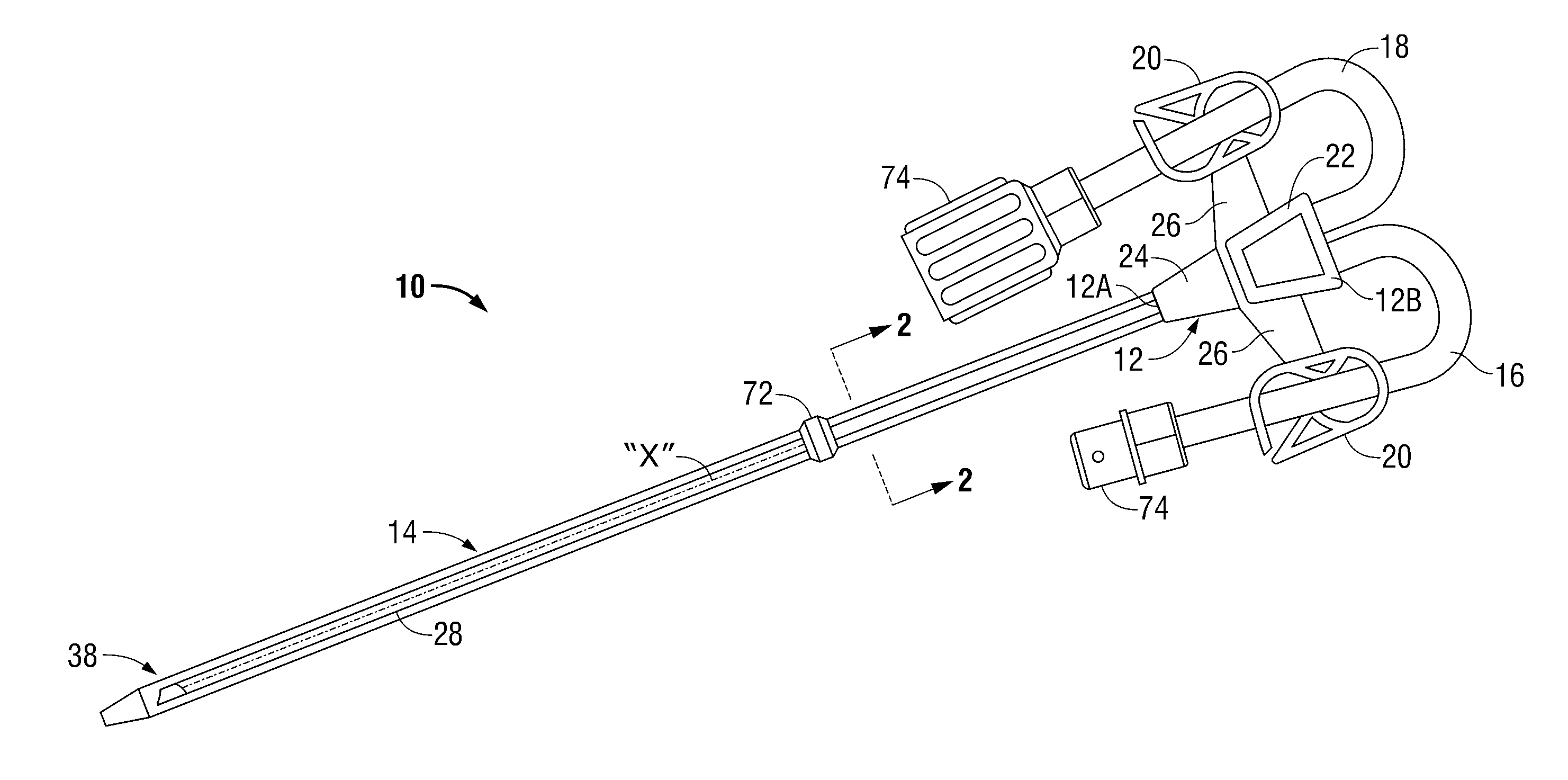Medical Catheter Having a Design Providing Low Recirculation and Reversibility
a medical catheter and low recirculation technology, applied in the field of hemodialysis catheter assembly, can solve the problems of inefficient dialysis, increased the potential for clean blood to be drawn back into the catheter, and poor flow performance, and achieve the effect of reducing the likelihood of recirculation
- Summary
- Abstract
- Description
- Claims
- Application Information
AI Technical Summary
Benefits of technology
Problems solved by technology
Method used
Image
Examples
Embodiment Construction
[0049]Various exemplary embodiments of the present disclosure are discussed herein below in terms of medical catheters for the administration of fluids, i.e., withdrawal and introduction, relative to the body of a subject and, more particularly, in terms of a hemodialysis catheter. However, it is envisioned that the principles of the present disclosure are equally applicable to a range of catheter applications including surgical, diagnostic and related treatments of diseases and body ailments of a subject. It is further envisioned that the principles relating to the presently disclosed catheter may be equally applicable to a variety of catheter related procedures, such as, for example, hemodialysis, cardiac, abdominal, urinary, intestinal, including both chronic and acute applications. Moreover, the catheter can be used for administration of fluids such as, for example, medication, saline, bodily fluids, blood and urine.
[0050]In the following discussion, the terms “proximal” and “tr...
PUM
| Property | Measurement | Unit |
|---|---|---|
| transverse dimension | aaaaa | aaaaa |
| length | aaaaa | aaaaa |
| dimensions | aaaaa | aaaaa |
Abstract
Description
Claims
Application Information
 Login to View More
Login to View More - R&D
- Intellectual Property
- Life Sciences
- Materials
- Tech Scout
- Unparalleled Data Quality
- Higher Quality Content
- 60% Fewer Hallucinations
Browse by: Latest US Patents, China's latest patents, Technical Efficacy Thesaurus, Application Domain, Technology Topic, Popular Technical Reports.
© 2025 PatSnap. All rights reserved.Legal|Privacy policy|Modern Slavery Act Transparency Statement|Sitemap|About US| Contact US: help@patsnap.com



